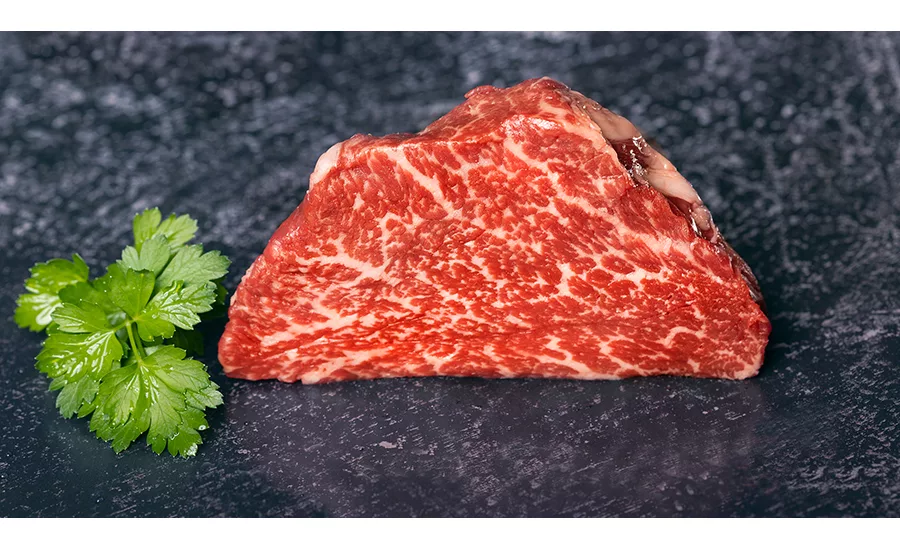Why Cultivated Meat's Route to the Mainstream Will Be Through Brand Partnerships
By investing in the cultivated meat space, established brands are sending a signal to the market that it is a viable and growing industry.

Image courtesy of Getty Images / Grafissimo
The hype and excitement around cultivated meat is huge, and with good reason. With Eat Just and Upside Foods introducing cultivated meat to consumers in Singapore and the U.S., the industry has taken its first tentative steps toward establishing itself as an environmentally friendly alternative to meat that doesn’t compromise on taste. In doing so, it could revolutionize the way the world produces and consumes meat for the better.
Not only that, the economic potential of the industry is huge. According to a report on cultivated meat published by McKinsey & Company, the global management consulting firm, the global industry could be worth $25 billion by 2030.
 Rich Dillon is CEO of the UKs leading cultivated meat company, Ivy Farm Technologies, an innovative food tech scale-up on a mission to create the best guilt-free, real meat. Dillon is a commercial leader with a history in building successful brands. First at Procter & Gamble, both in the UK and the U.S., later at Red Bull, and more recently in the international expansion of craft brands owned by Heineken. He holds an MBA from Sam Walton Business School in the U.S. and a BA in Business from the University of Sheffield.
Rich Dillon is CEO of the UKs leading cultivated meat company, Ivy Farm Technologies, an innovative food tech scale-up on a mission to create the best guilt-free, real meat. Dillon is a commercial leader with a history in building successful brands. First at Procter & Gamble, both in the UK and the U.S., later at Red Bull, and more recently in the international expansion of craft brands owned by Heineken. He holds an MBA from Sam Walton Business School in the U.S. and a BA in Business from the University of Sheffield.
However, in order for cultivated meat’s environmental and economic benefits to be realized on this global level, it needs to scale, achieve commercialization and, finally, be adopted by everyday consumers. Although hugely promising, how can an industry in the early stages of its development go about doing this? The answer, I think, lies in learning from and harnessing the expertise and resources of brands that have already been there and done it.
Scaling Up and Reducing Costs
Following technology success and regulatory approval in countries like Singapore and the U.S., the next step for the cultivated meat industry to reach the mass market, and realize its environmental and economic potential, is to scale up and lower costs to a level that will enable competition with “conventional” meat products. By demonstrating its ability to do this, the industry will be able build greater investor confidence and generate the further funding it needs to prosper.
One of the most effective ways to do this is by forming partnerships with established brands, which possess the necessary resources and expertise, such as capital and R&D capacity, to scale up production. In the capital-intensive industry that is cultivated meat, which requires significant investment in research and development, technology and manufacturing, these partner brands have the resources to make this investment, deploy capital effectively, bring costs down and get cultivated meat products to the mass market sooner, with credibility.
The venture investment arm of Tyson Foods for instance, Tyson Ventures, invested in Israeli startup Future Meat Technologies back in 2018 with the aim of reducing production costs from $800 per kilogram to $5-$10 in under two years. By 2021, Future Meats claimed that it could produce a pound of its cultivated chicken for $7.70, or $16.99 for a kilogram. Although the initial target wasn’t quite achieved within the two-year timeframe, this represents a huge reduction in production costs achieved largely through the injection of capital by Tyson Ventures, which helped to increase and advance Future Meats’ R&D capacity, such is the impact of these types of partnerships. A report published by McKinsey and Company in 2021 found that "since developing the first prototypes, (cultivated meat) companies have been able to reduce costs by 99 percent," which is huge progress within such a short period of time.
On the journey toward mainstream adoption, the significance of credible and scalable technology cannot be overstated either, especially in attracting and reassuring investors. For brand participation and technological maturation, it's crucial to leverage what is already available. This means tapping into existing industrial streams of raw materials and harnessing industrially proven technologies possessed by established companies, rather than relying solely on novel, untested methods. By integrating these technologies, the cultivated meat industry can further accelerate the maturation of its processes. Not only that, the adoption of available technologies fosters collaboration and synergy with adjacent industries, potentially leading to the creation of zero-waste ecosystems.
By integrating these technologies, the cultivated meat industry can further accelerate the maturation of its processes. Not only that, the adoption of available technologies fosters collaboration and synergy with adjacent industries, potentially leading to the creation of zero-waste ecosystems.
Building Consumer Trust and Acceptance
Scaling up and becoming price competitive isn’t enough, however. Another hurdle the cultivated meat industry faces is reaching consumers and gaining their trust.
Again, this is where the power of established brands can play a pivotal role. Unlike some of those cultivated meat companies new to the industry, these brands have the necessary infrastructure, processing capability and distribution channels through which their younger partners can reach and sell to consumers, such as supermarkets, restaurants and the supply chain networks that precede them. They also bring expertise in flavor and quality, which is crucial for creating products that resonate with consumers, providing sustainable and affordable products that don’t sacrifice on taste—a sticking point for many seeking alternatives to industrially produced meat.
Not only that, established brands are perceived as “established” for a reason—they have built consumer trust over time. Cultivated meat, however, as with any novel product, is unfamiliar to the everyday consumer, which means there will be natural hesitation to it among certain demographics. By forming partnerships, which could involve marketing and selling these products under more familiar brand names that are renowned for being safe, sustainable and of high quality, cultivated meat producers are more likely to get their products into shopping baskets and on dinner tables.
For instance, Ivy Farm has recently partnered with Finnebrogue, a leading artisan food producer, to bring wagyu beef burgers to more consumers—answering the growing demand for the meat, while lowering the impact it has on the environment. In part, this partnership was established because of Finnebrogue's long history and track record of producing premium products that do not compromise on taste and quality—and its customers know this. Equally, it showcases how cultivated meat can work with traditional, established producers, helping to reduce the pressure on them to intensify operations to meet growing demand, while boosting consumer choice.
Legitimizing the Cultivated Meat Industry
Established brands are also playing a key role in legitimizing the cultivated meat industry and making it more mainstream. By investing in the cultivated meat space and advocating for the economic and environmental benefits it will provide, established brands are sending a signal to the market that it is a viable and growing industry. This can help to attract much needed investment as companies look to accelerate the development of their products.
In turn, as this industry continues to grow, we can expect to see even more established brands entering the market. This trend is indicative of both progress for the space, that cultivated meat is becoming a more viable option for consumers, and that it is a rapidly emerging market that bigger brands, such as Tyson and Cargill Foods, simply cannot ignore.
As with any rapidly evolving market, there are still hurdles for the cultivated meat industry to overcome. However, once it has done so, the benefits it will reap will be significant for the companies involved, their established brand partners and, most importantly, consumers, industrially farmed animals and the planet. With the growing support of brands, these benefits, which include combating climate change, food insecurity and biodiversity loss, and building a more ethical food production system, can be realized much sooner.
Looking for a reprint of this article?
From high-res PDFs to custom plaques, order your copy today!




